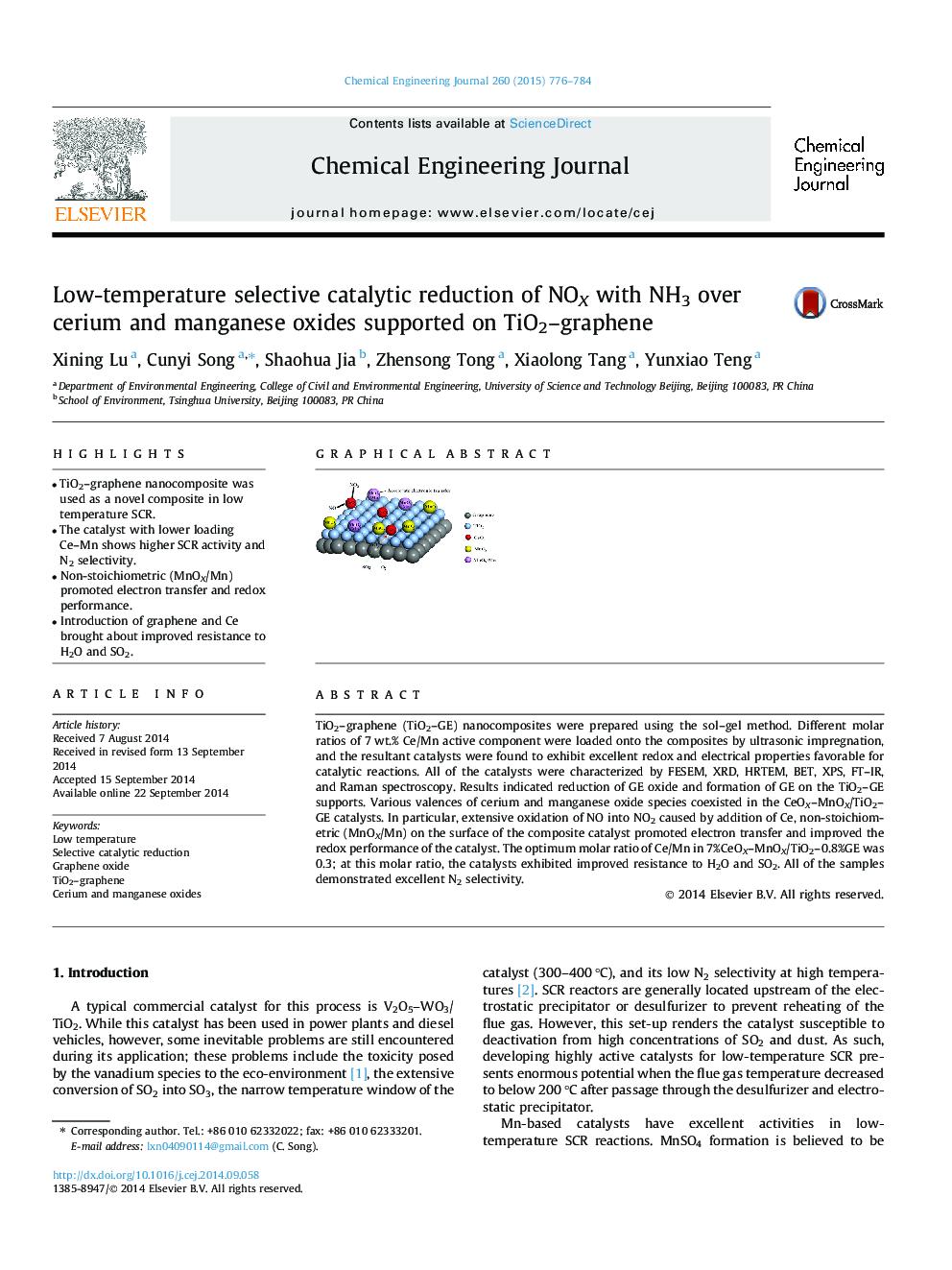| کد مقاله | کد نشریه | سال انتشار | مقاله انگلیسی | نسخه تمام متن |
|---|---|---|---|---|
| 146780 | 456378 | 2015 | 9 صفحه PDF | دانلود رایگان |

• TiO2–graphene nanocomposite was used as a novel composite in low temperature SCR.
• The catalyst with lower loading Ce–Mn shows higher SCR activity and N2 selectivity.
• Non-stoichiometric (MnOX/Mn) promoted electron transfer and redox performance.
• Introduction of graphene and Ce brought about improved resistance to H2O and SO2.
TiO2–graphene (TiO2–GE) nanocomposites were prepared using the sol–gel method. Different molar ratios of 7 wt.% Ce/Mn active component were loaded onto the composites by ultrasonic impregnation, and the resultant catalysts were found to exhibit excellent redox and electrical properties favorable for catalytic reactions. All of the catalysts were characterized by FESEM, XRD, HRTEM, BET, XPS, FT–IR, and Raman spectroscopy. Results indicated reduction of GE oxide and formation of GE on the TiO2–GE supports. Various valences of cerium and manganese oxide species coexisted in the CeOX–MnOX/TiO2–GE catalysts. In particular, extensive oxidation of NO into NO2 caused by addition of Ce, non-stoichiometric (MnOX/Mn) on the surface of the composite catalyst promoted electron transfer and improved the redox performance of the catalyst. The optimum molar ratio of Ce/Mn in 7%CeOX–MnOX/TiO2–0.8%GE was 0.3; at this molar ratio, the catalysts exhibited improved resistance to H2O and SO2. All of the samples demonstrated excellent N2 selectivity.
Figure optionsDownload as PowerPoint slide
Journal: Chemical Engineering Journal - Volume 260, 15 January 2015, Pages 776–784